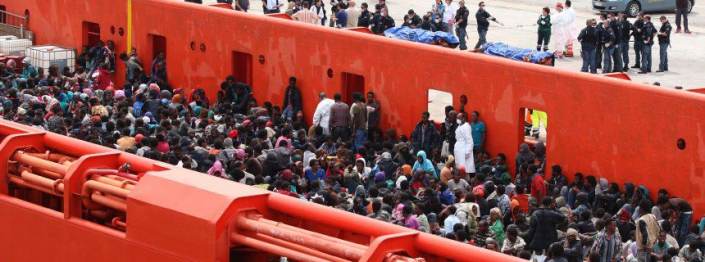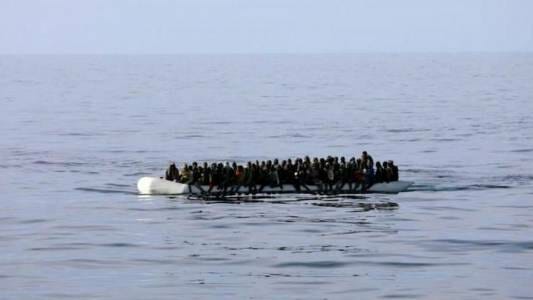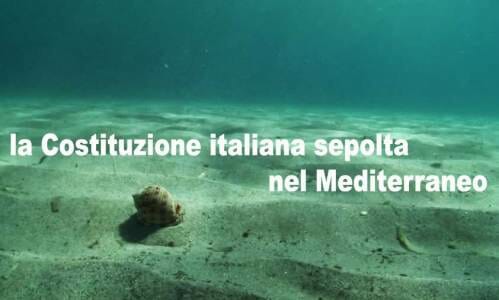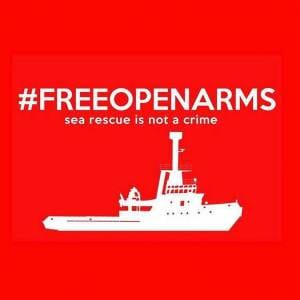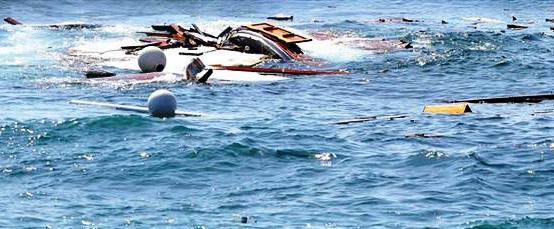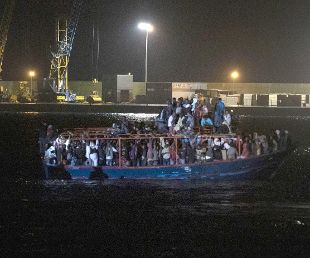Migrants’ routes: Online Map Assembled with Stories, amongst Torture and Abuse
The interactive map is user-friendly and allows reconstructing via video reports, graphics and statistics a complete picture of what is happening past the strait of Sicily. ‘There are many maps that show you data and statistics to explain migratory routes. – explains Alberto Barbieri, general coordinator of MEDU – This map provides data, but the important element is the direct stories and testimony of those who have faced these journeys. A map built upon the migrants’ stories.’ The average age of the assisted migrants interviewed and assisted by MEDU (of which 2406 males and 197 females) is 26, and among them are 205 minors, most of which encountered in the informal settlements in Rome. The migrants encountered in Sicily were all asylum seekers accommodated in institutional centres; in Rome and Ventimiglia; all migrants were in transit to another European country, and in Egypt they were resident refugees and detained migrants.
The stories of those who have made it make you shudder, at the same time the detention conditions of many migrants in Libya, expressed by those who faced this, do not seem to get much interest from the international community. ‘In this moment in Libya there are hundreds of thousands migrants trapped- explains Barbieri, – Most of which in conditions of detention, kidnapping and slavery. The numbers say 400.000 people but maybe they are even more. The evidence gathered by us describes a country that has become some sort of lager where migrants are subject to extremely serious violence and abuses. This is a country where crimes against humanity are committed on a large scale. A place of death and torture for hundreds of thousands of people. The international community needs to respond with the maximum energy and urgency, which is currently not taking place.’ A dramatic situation, explains the organisation, as evidenced by migrants’ stories in Tripoli, Sabha, Gharyan, Beni Walid, Zawia and Sabratha.
‘The first time I left by sea the Libyan coast guards intercepted us and they took us back to the shore- a 25 years old migrant tells the MEDU operators in the hotspot of Pozzallo, in July 2017. – They brought us to a prison in Zawia called Ossama Prison. The difference between this prison and the other ones is that if you pay a ransom you are certain that you will be released, which is not always the case in other prisons. Endless cruelties and tortures occur inside the prison with aim to obtain the money. A Commission of Europeans monitors this prison once a month. During the visits the guards get rid of all the torture instruments, the chains and open all the cells so it looks like a refugee camp more than a prison. Then when the visit is done everything returns the way it was.’ According to estimates by MEDU, 30 of the detention centres are formally under the control of the Libyan government of Al Sarraj, while between 6.000 and 15.000 are present in these centres. The remaining tens of thousands migrants- added Barbieri- find themselves in an enormous black hole made of detention centres and kidnappings controlled by militia, smugglers and criminal gangs such as the Asma Boys.’
According to the data collected by MEDU in the past four years, 85 per cent of migrants that arrived to Libya have experienced torture and inhuman and degrading treatments. 79 per cent have been detained or kidnapped in overcrowded places and in very bad hygienic sanitary conditions, 60 per cent have suffered constant food, water, and medical cure depravations, ultimately just over half have undergone severe beatings, but there are also sexual assaults, sexual indignities, burns, falaka (beatings in the soles of the feet), electric shocks and tortures. Every detained migrant has suffered humiliation and religious outrage, nine out of ten migrants have seen someone die, being executed or tortured. However, the organisation denounces, the international community does not seem to take care of it. ‘If the Italy-Libya agreement of last February foresaw the contrast of migration flows towards Italy and the improvement of migrants’ living conditions- explained Barbieri-, today it emerges clearly that, while the first objective is stubbornly carried out, the second one appears entirely misapplied, thereby making Italy and the European Union partly responsible of the atrocities that are being consumed in Libya.’ According to MEDU, the humanitarian initiatives provided in the field result ‘dramatically insufficient in regards to the dimension of this human catastrophe; pretty much like expecting to empty out a morass with a spoon.’
Translation: Inés Fanlo Morales

